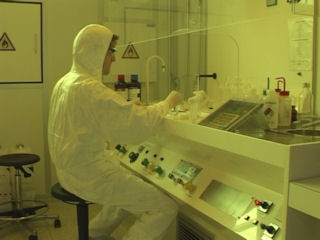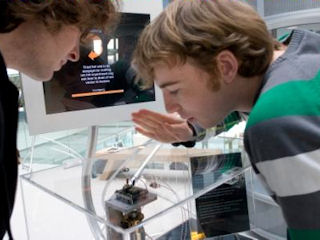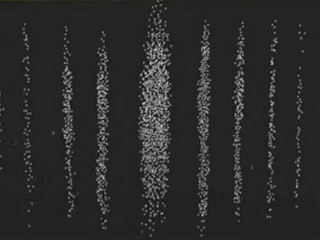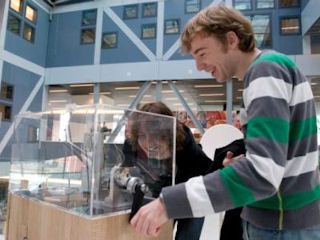Golden wires and quantum limits
As we all know, computer chips are getting smaller and smaller while computer capacity is getting larger and larger. The main reason for this is that scientists have been able to make the transistors, which are a kind of electronic switches, ever more tiny. The result is that the capacity of the chips increases and the computers get faster. Which is good! However, it looks as if we may well be approaching a limit; the quantum limit.

Research in Groningen
Nano technologist and researcher at the University of Groningen, Eek Huisman, knows all about quantum effects: ‘Once such parts start getting really small, then quantum effects start to play a role.’ What it boils down to is that the electrons will start to be affected by the laws of quantum mechanics and so will start to behave unpredictably. Electrons in very thin wires are limited to moving as a wave in one single direction. The electricity passing through the wire will start to behave like an electron that orbits the nucleus of an atom. For years now we have gladly used the characteristics of electrons at the ‘normal level’, but as the devices become smaller and smaller, we are confronted with the problem that the electrons in them no longer behave as we expect them to.

Electricity current through atoms
‘Researchers are now trying to find out how they can keep electrons under control at the nano scale,’ explains Eek. His own research focuses on quantum conduction. You can find an example of this phenomenon in the Science LinX exhibition. In an experimental set-up designed by Eek himself (the ‘quantum conducting device’), you will notice that something strange happens when you send an electric current through a gold wire that is 0.25 nanometres thick (1 gold atom!). The electricity is no longer conducted in an uninterrupted stream but in short steps instead, quantum steps.

DIY with atoms
Eek and his fellow researchers now want to find out if these steps can be used for a computing function. Could you build a transistor into a gold wire 1 atom thick? The researchers are testing all the possibilities in the lab in Groningen. One option is to replace 1 gold atom with a molecule that can be switched on and off under the influence of light.

Can we make it smaller?
Indirectly, the work done by Eek and his colleagues is of great importance to computer technology. Their bottom-up approach provides many new insights that can be applied in practice. While others take computer chips as their starting point and try to make these work at increasingly smaller scales, Eek starts down at the quantum level and tries to find functionality right there. He beams: ‘Once we’ve found out what electrons can do at the nano scale, the road to quantum computers will be open!’
Links
Colophon
Special thanks to: Eek Huisman, Renee Kist, Dr Caspar van der Wal, Arjan van der Pal, Maarten Inklaar, Gerja Everts, Stijn Goossens and Ymkje Huismans. Please contact Science LinX if you should have been included in the acknowledgements.
Author
Siëlle Gramser

| Last modified: | 23 December 2016 2.18 p.m. |

